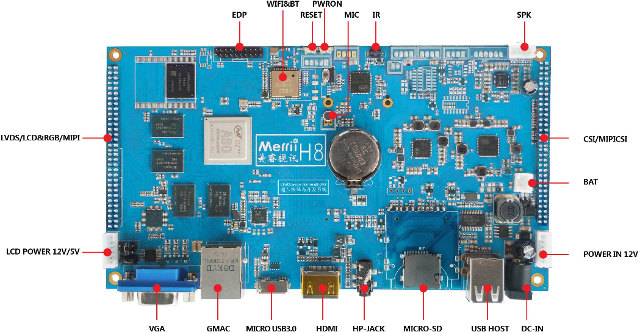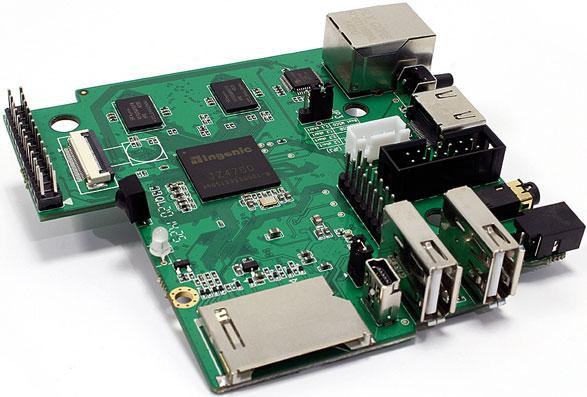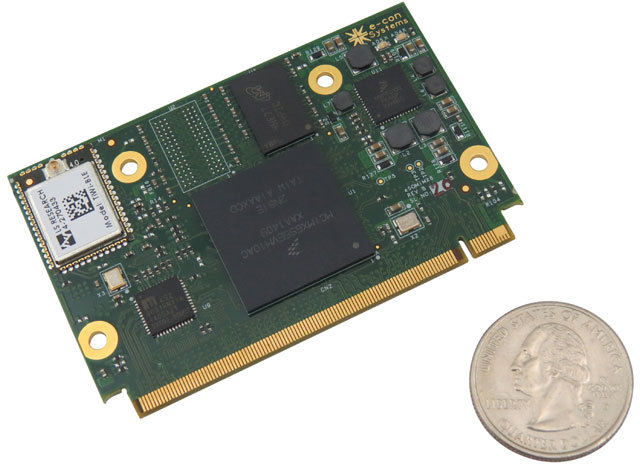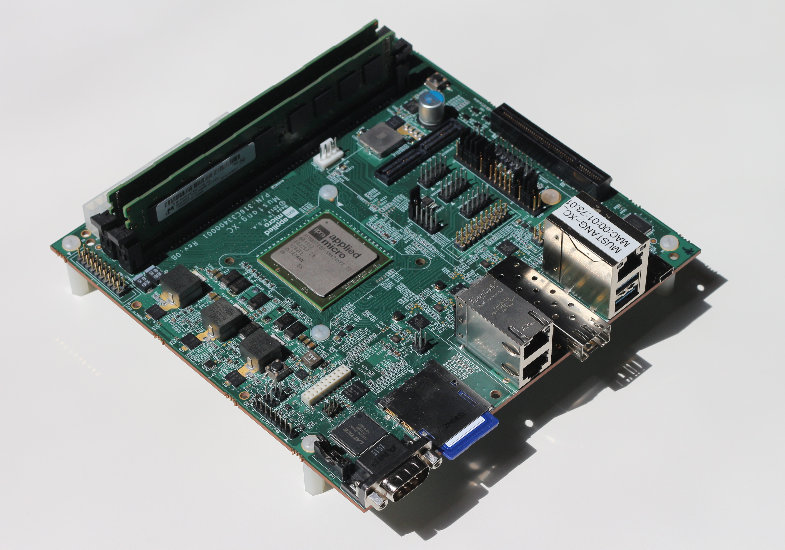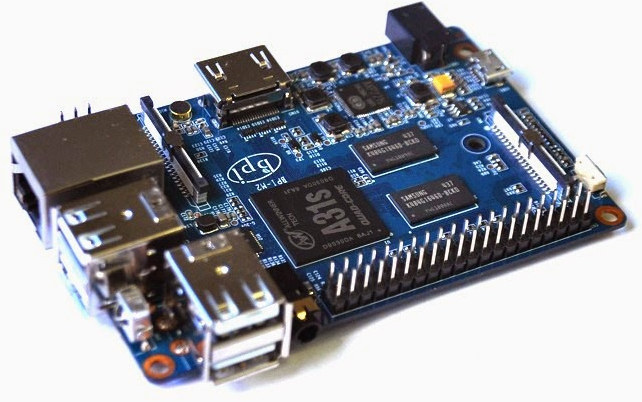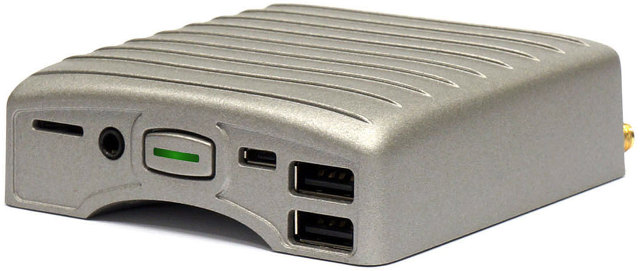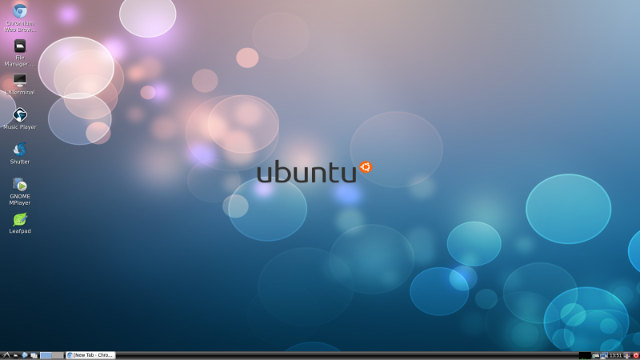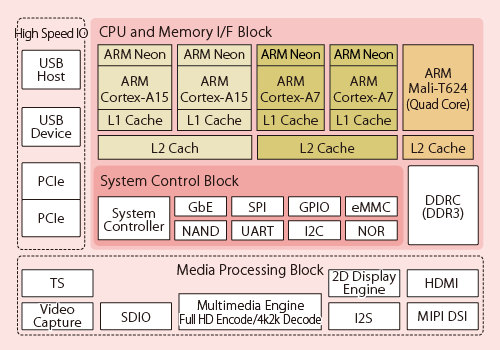Up to now at least three boards based on Allwinner A80 processor were available: A80 OptimusBoard by Merrii, pCDuino8 by Linksprite, and Cubieboard4 by Cubitech, and the first two boards are basically the same. Merrii has now introduced a new board which they call “A80 Hummingbird H8”, with more features and ports including HDMI, VGA and eDP video outputs, LVDS / MIPI DSI display interfaces, MIPI CSI camera interface, an RTC with battery and more. Merri H8 specifications: SoC – AllWinner A80 octa-core processor with 4x Cortex 15, 4x Cortex A7 cores in big.LITTLE configuration with Imagination Technologies PowerVR GC6230 GPU compliant with OpenGL ES 3.0/2.0/11, OpenCL 1.1, and DirectX 9.3 System Memory – 2GB DDR3 Storage – 8GB internal storage (Sandisk SDIN7DU2 iNAND Flash), micro SD slot up to 32 GB Video Output/ Display Interfaces HDMI 1.4 up to 4K UHD resolution VGA port eDP v1.2 up to 2560×1600 @ […]
MIPS Creator CI20 Development Board is Now Available for $65
When Imagination Technologies first announced their developer program for MIPS Creator CI20 board, they did not disclose the price, but based on the specifications I estimated that a decent price would be $70 o $80. The company has now announced broad availability of the board, which can be pre-ordered for just $65 or 50 GBP depending on the continent you live in, with shipping scheduled for the end of January 2015. This development board is based on Ingenic JZ4780 dual core MIPS processor with 1GB DDR3, 8GB flash, and features an HDMI output up to 1080p, Audio in and out, a Fast Ethernet RJ45 port, a Wireless module with Bluetooth 4.0 and Wi-Fi, an IR receiver, and expansion headers. Several projects have already been ported by developers who got their free board a few months, ago including XBMC/Kodi, several games such as Spiral Episode 1, and beside Android 4.4 and […]
e-con Systems Unveils eSOMiMX6 SoM based on μQ7 Form Factor, and Ankaa Development Kit
QSeven is one of the many standards for system-on-modules, and it defines both Qseven (Q7) 70x70mm modules, and smaller μQSeven (μQ7) 70x40mm modules. While there are quite a few SoMs following the larger form factor, few modules are based on micro Q7, and e-con Systems eSOMiMX6 has just launched one of these tiny modules with eSOMiMX6 system-on-module powered by Freescale i.MX6 processors, as well the corresponding Ankaa development kit comprised of the SoM and a baseboard. eSOMiMX6 module specifications: SoC – Freescale i.MX6 single, dual or quad Cortex A9 processor @ 800MHz to 1.2 GHz with Vivante GPUs System Memory – 256MB/512MB (Solo only), 1GB (default), or 2GB (dual/quad only) LVDDR3 RAM Storage – 4GB (default) to 64GB eMMC flash, 2MB SPI NOR flash, and SD/MMC + SATA II interfaces via MXM connector Display / Video Output: HDMI up to 1920 x 1080 Dual channel 24-bit LVDS 24-bit LCD RGB MIPI […]
Applied Micro XC-1 Server Development Board (Mustang) is Now Available to Developers for $895
64-bit ARM server boards such as Applied Micro XC-1 Mustang and AMD Opteron A1100 development kit have been available since the beginning of the year, but only to selected companies, and at a price of several thousand dollars per board. Applied Micro is now offering their X-Gene based XC-1 development board to individual developers for $895, or about ~40% discount to the $1495 company now have to pay for the board. It may also be available from distributors (part number: EV-883208-X1-PRB-1). XC-1 board (codenamed Mustang) technical specifications: SoC – Applied Micro X-GeneAPM883208-X1 8-core ARM 64-bit @ 1.6 GHz System Memory – 2x DDR3 UDIMM memory slots up fitted with 2x 4GB sticks (8 GB), upgradable to 16GB Storage – 1x 128Mbit SPI NOR Flash for booting, 1x SATA 3 ports, SD card slot, 1024Kb and 256Kb I2C EEPROM Connectivity – 2x Gigagit port (SGMII), 10 GbE SFP+ cage, 1x Gigabit […]
Banana Pi M2 is an Allwinner A31s Quad Core Board with Raspberry Pi Model B+ Form Factor
Banana Pi, and the recently announced Banana Pro, are Android & Linux development boards based on Allwinner A20, with a form factor similar to Raspberry Pi Model B and B+ boards respectively. A new revision of the board is now available with Banana Pi M2 powered by Allwinner A31s quad core processor, and in a form factor similar to R-Pi B+. Banana Pi M2 specifications: SoC – Allwinner A31s quad core Cortex A7 @ 1.0 GHz with PowerVR SGX544MP2 GPU System Memory – 1GB DDR3 Storage – Micro SD slot up to 64GB Connectivity – 10/100/1000 Ethernet, 802.11 b/g/n Wi-Fi (Realtek) Video Output – HDMI, CVBS, and LVDS/RGB header Audio Output – HDMI and 3.5mm stereo jack Camera – CSI connector USB – 2x USB 2.0 host ports + micro USB port (power only) Debugging – UART pins for serial console Expansion Header – 40-pin R-Pi “somewhat” compatible header with […]
Compulab Utilite2 is a Snapdragon 600 Powered mini PC Running Android 4.4 or Ubuntu 14.04
Compulab Utilite is a family of mini PC based on Freescale i.MX6 processors that can run either Android or Ubuntu, and was launched in 2013. The company has now introduced the second generation of Utilite computer with a Qualcomm Snapdragon 600 quad core Krait 300 processor, with 2GB RAM, eMMC and mSATA storage, and various network connectivity options such as Wi-Fi, Gigabit Ethernet, and Cellular. Utilite2 will be 30% smaller than the original Utilite computer, and twice the performance of the Utilite Pro with I.MX6 quad. There are two models: Utilite2 4GB, Utilite2 SSD, with the latter adding a 32 GB SSD. Apart from that both models share the same specifications: SoC – Qualcomm Snapdragon 600 APQ8064 quad-core Krait 300 @ 1.7GHz with Adreno 320 GPU compliant with OpenGL ES 1.1 / 2.0 / 3.0 and OpenCL System Memory – 2GB DDR3-1066 Storage – 4GB eMMC, mSATA socket (mini-PCie form-factor, […]
Preliminary Ubuntu Image for Tronsmart Draco AW80 Octa-core mini PC
Tronsmart Draco AW80 is an Allwinner A80 based mini PC pre-loaded with Android 4.4. A preliminary Ubuntu image is now available for the device. It’s still a little buggy, but you can access LXDE desktop on an HDMI TV, Ethernet is working, and web browsing is apparently working nicely. Known bugs include FAT32 partitions are read-only, wireless mouse and keyboard are not working (USB versions are OK), shutdown does not work, the user interface is not as snappy as in Android, and YouTube video playback is choppy. The last two issues could be related to the lack of VPU and GPU drivers providing video hardware decoding, and 2D/3D hardware acceleration respectively. The good news is that the company working on Draco AW80 got the GPU drivers from Imagination, and an updated image could be available with hardware acceleration. I’m not sure sure about VPU support, which is extremely important if […]
Fujitsu MB86S70 and MB86S73 ARM Cortex A15 & A7 Processors Run Linux for the Embedded Market
I like to check the ARM Linux kernel mailing list from time to time, as you may discover a few upcoming ARM processors. This week I found out Exynos 5433 and Exynos 7 are actually two different processors (thanks David!), and that AMD had submitted code for their 64-bit ARM Opteron A1100 SoC for servers. I also noticed a patchset for Fujitsu MB86S7X SoCs, and since I don’t often mention Japanese silicon vendors, probably because they now mainly deal mostly with the embedded market that gets very little press, and most information is in Japanese, I decide to have a look. There seems to be four SoC parts in MB86S7x family with MB86S70 quad core processor with two ARM Cortex A15 and two ARM Cortex A7 cores in big.LITTLE configuration, and MB86S73 with two ARM Cortex A7 cores only, as well as MB86S71/72 with 2x A15 and 2x A7, with […]


